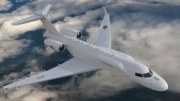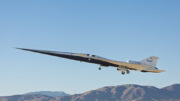AeroMorning October 27th, 2025
Australia’s defense sector is poised for steady growth over the next several years, driven by evolving security challenges in the Indo-Pacific region and a strategic emphasis on modernizing military capabilities. Forecasts indicate that the country’s defense budget will grow at a compound annual growth rate (CAGR) of approximately 5.9% between 2026 and 2030, reflecting both sustained government commitment and increased investment in advanced technologies.
This projected growth is consistent with Australia’s broader defense strategy, which focuses on enhancing maritime and air capabilities, strengthening cyber defense, and improving interoperability with allied forces. Key expenditure areas include procurement of next-generation naval vessels, fighter aircraft upgrades, and investment in surveillance and intelligence systems. The anticipated increase in funding is also expected to support research and development initiatives, particularly in artificial intelligence, autonomous systems, and other emerging defense technologies.
Analysts note that the defense budget expansion aligns with regional security trends, including the need to maintain a credible deterrent posture amid rising geopolitical tensions. Australia’s strategic focus is increasingly oriented toward ensuring readiness for high-end warfare scenarios, while also sustaining capabilities for humanitarian assistance, disaster relief, and regional security cooperation. This dual-use approach underscores the importance of flexible budgeting that can accommodate both conventional and non-conventional security requirements.
From a financial perspective, the 5.9% CAGR implies a steady, manageable growth trajectory, allowing for multi-year planning and procurement cycles. It also provides defense contractors and suppliers with greater predictability, encouraging long-term investment and industrial development. Domestic defense industries, in particular, are likely to benefit from increased government contracts, fostering innovation and workforce development.
While the forecasted growth is promising, it comes with challenges. Budget allocation must balance modernization priorities with operational sustainability, and policymakers will need to ensure that new investments translate into tangible capability improvements. Additionally, maintaining transparency and cost-efficiency will be essential to sustain public and parliamentary support for higher defense spending.
In conclusion, Australia’s defense budget trajectory from 2026 to 2030 reflects a deliberate, strategic approach to addressing evolving security needs. With a projected CAGR of 5.9%, the country is positioning itself to enhance its military capabilities, support technological innovation, and strengthen its role as a key security actor in the Indo-Pacific region.









Be the first to comment on "Australia’s Defense Budget Forecast: 5.9% CAGR Between 2026 and 2030"